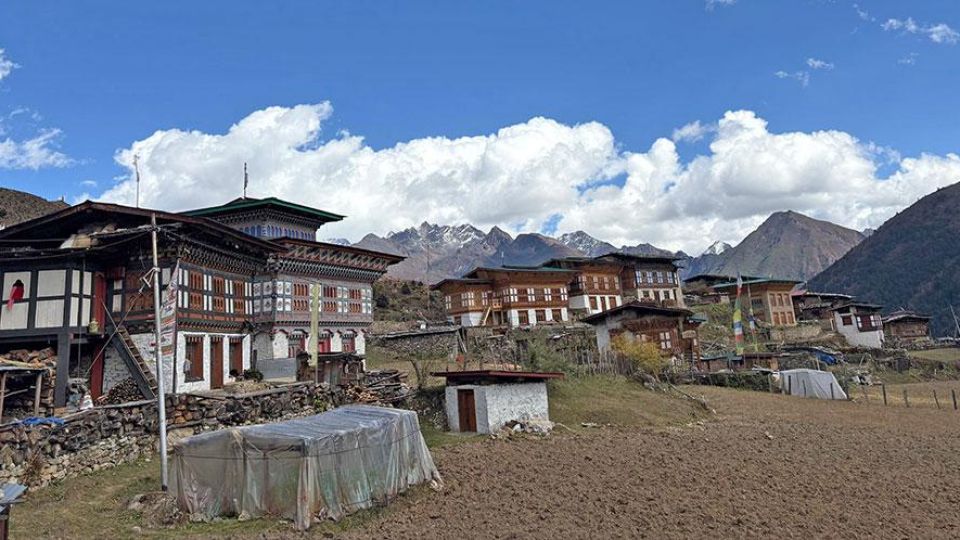October 29, 2025
THIMPHU – Unlike some parts of the country witnessing goongtong (empty or abandoned rural households), Laya in Gasa is bucking the trend with a consistent annual increase in household numbers. The gewog currently has 313 households.
Laya Gup Tshewang attributes this growth to diverse factors, including economic opportunities, the introduction of the Royal Highland Festival, and a strong cultural attachment to the land and livestock, among others.
He added that most young people choose to remain in the village after their studies, further contributing to the number of households, with some families even maintaining two or three houses.
“The current trend in Laya is positive, considering its remote location,” he said, adding that the Royal Highland Festival has further motivated Layaps to stay.
Residents now generate income through various means, including collecting cordyceps, making incense products, selling animal products, and offering homestay and pony services.
Of the 313 households, about 70 provide homestay services, which are graded A, B, or C based on quality.
An A-grade homestay costs Nu 1,800 per night, including meals, Nu 1,400 for B-grade, and Nu 1,200 for C-grade.
Demand for homestays is high, especially during events like the Royal Highland Festival.
During the recent festival, there was not a single homestay available, forcing many visitors to pitch tents in agriculture fields.
Leki, a 29-year-old homestay owner, hosted 14 guests during the festival, charging Nu 1,400 per person for a four-night stay.
He said the festival has provided a steady source of good income since it began. Leki also earns from pony services.
Leki said that as more youth stay in the village, land is subdivided to build new homes.
“We don’t use this homestay for our family, as we have another house. We use it exclusively for guests,” Leki said, adding that the number of houses in his area has grown significantly in recent years.
“I want to make my homestay even more beautiful for next year’s highland festival,” he added.
Despite the high altitude, Leki said that economic opportunities are robust, with some families still owning 200–300 yaks, which provides a good income.
Improved infrastructure has also made life easier.
The road connection from Gasa to Taktsimakhang has drastically reduced travel time. Layaps now only have to walk about two hours to reach their homes from Taktsimakhang.
The community also has modern facilities, including a basic health unit, a school, electricity, shops, restaurants, bars, and sports facilities. The village is neatly maintained under a mandate that requires residents to manage waste and transport it to Taktsimakhang for proper disposal or recycling.
According to teachers at Laya Middle Secondary School, awareness of the importance of education is improving at Laya. However, some parents still prefer their children to discontinue studies after Class X or XII to remain in the village and continue the family legacy.
Another resident, Tenzin, said that the growing population is beneficial for both the village and the country.
However, villagers also report emerging challenges, including water shortages and the overharvesting of cordyceps and incense-making materials.


